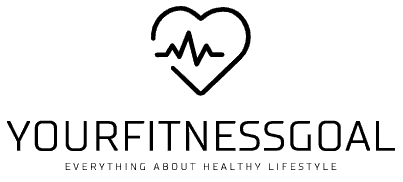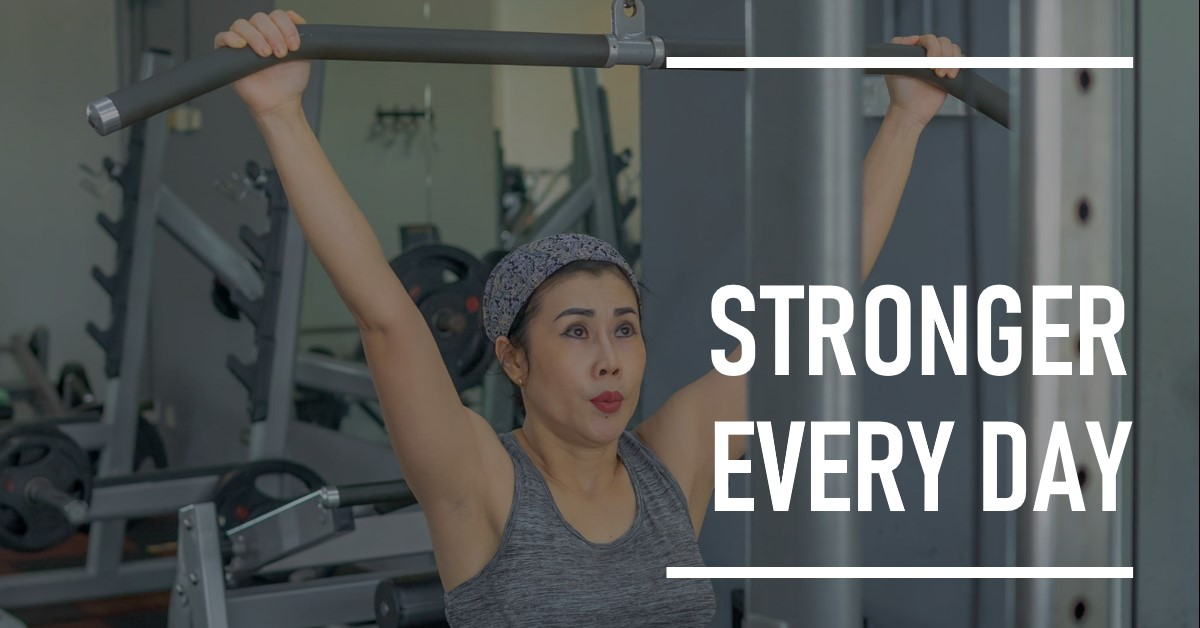Gaining muscle as a female can be a very tricky and at times confusing thing. Unlike men, they have lower levels of testosterone—a critical hormone responsible for muscle development. Still, these hormonal differences do not mean women cannot build muscle. The correct training regimen, coupled with a perfect diet, can do the trick. Knowing these signs of muscle growth will keep you motivated and help you tweak your routine when needed. Here are the top five signs that you are gaining muscle.
1. Weight Gain, But No Waist Gain
One of the most common indicators of muscle gain is an increase in weight without a corresponding increase in waist circumference. For many females, the idea of gaining weight can be daunting, especially if the goal was to lose weight in the first place. However, muscle mass is denser than fat, meaning that as you build muscle, you might see the number on the scale go up, but your clothes fit better and your body looks leaner.
Professional athletes and fitness enthusiasts usually track their waist circumference alongside weight to monitor muscle gain. When the mass of muscles increases, it usually manifests itself more vividly in the legs and arms, whereas the waistline remains the same or even decreases. This can be a clear indication of the fact that your weight gain is due to muscle rather than fat.
2. No Weight Gain, But Physical Changes
Another reliable signs of gaining muscle in female is the physical changes in your body without an increase in weight. People who are new to weightlifting or returning after a long break mostly experience this phenomenon. You probably won’t notice much difference on the scale initially because you are losing fat at the same time you are putting on muscle.
Just to track it, take note of how your clothes fit and look into the mirror. Do your clothes feel looser around the waist but tighter around the arms and legs? Do you see more definition in your muscles, especially when you flex? These are huge indicators that you are gaining muscle and losing fat.
However, if you insist on monitoring it down to a tee, you have DEXA scans, which give you the details of your muscle and fat distributions. Unlike regular scales, these scans are not influenced by factors such as hydration levels, so you can get a much clearer view of your progress.
3. You’re Getting Stronger
Increasing strength is one of the more direct indicators of muscle growth. If you find yourself lifting heavier weights or doing more repetitions over time, you must be building muscle. It is important that these strength gains come from proper form and technique and not from compensatory movements or momentum.
For beginners, strength gains can come relatively quickly as your body gets used to the new stress. Over time, these gains can taper off, but so long as you keep challenging your muscles, growth will continue. All of this can be tracked in a workout journal to see improvements and keep you motivated.
4. You Are Less Sore
Muscle soreness is part of doing strength work, especially for a beginner. Over time, as you become more seasoned and your muscles adapt to the requirements being placed on them, you should experience less soreness. A decrease in soreness can be a sign that your muscles are getting stronger and more resilient.
It’s important to distinguish between different types of soreness. Acute soreness right after a workout is normal, but chronic soreness might indicate overtraining or inadequate recovery. Proper nutrition, hydration, and rest are important in letting your muscles repair and grow stronger.
5. Better Posture
Better posture is the most unrecognized but key sign of muscle growth. Strength training, especially with a focus on the back, shoulders, and core, will make your posture better by strengthening the muscles that hold up your spine. If you feel you can stand taller now and do not have those so-called sharp pains while sitting for a long time, then it means your muscles are getting strong and balanced.
Better posture will give you an attractive appearance and less back pain or posture-related problems. With the increasing continuity of postural exercises, there may be long-term benefits for improving your overall health and looks.
Food to Gain Muscle for Females

Building muscles requires more than just lifting weights; it requires proper nutrition. For females, creating a diet that promotes muscle growth involves consuming a balanced mix of macronutrients, being in a calorie surplus, and smart food choices.
Eat in a Caloric Surplus
The first step towards increasing muscle mass is to eat in a caloric surplus. Your body needs more calories than it expels. The surplus will provide energy for repair and muscle growth. However, this surplus has to be regulated to ensure there is no excess fat gain. Therefore, when you train regularly, you increase the chances that the surplus will translate to muscle growth rather than fat gain.
Know Your Macros
Macronutrient balance is required for muscle growth. Sports dietitians usually recommend a distribution of 4 grams of carbohydrates, 2 grams of protein, and 0.9 grams of fat per kilogram body weight. Protein is especially important since it forms the building blocks (amino acids) of what is needed to repair and grow your muscles. Complex carbohydrates, such as whole grains, fruits, and vegetables, provide sustained energy for the workout. Healthy fats coming from avocados, nuts, and olive oil support hormone production and overall health. Lean protein sources, such as chicken, fish, eggs, and other plant-based proteins, support muscle repair.
Timing Your Meals
Meal timing may also contribute to muscle growth. Protein and carbohydrates can be consumed before and after a workout to enhance performance and promote recovery. A pre-workout meal provides energy for the workout. A post-workout meal also aids in muscle repair and replenishes glycogen stores.
Supplements in Muscle Growth
Apart from a balanced diet, other supplements can assist as signs of gaining muscle female. The most common supplement is creatine. Creatine boosts performance in high-intensity exercises, leading to increased muscle growth over time. If you are considering taking creatine, be sure to read through this in-depth guide about how creatine works for weight loss to understand its benefits and how you can incorporate it into your routine.
Good Training Techniques for Muscle Growth
Progressive Overload
Muscles need progressive overload if they are to build up continuously. Progressive overload refers to progressively increasing either the weight, frequency of performance, or number of repetitions in your strength training. Progressive overload of your muscles will keep them building and adapting.
Compound Movements
Compound movements engage multiple muscle groups at the same time. Exercises like the squat, deadlift, and bench press make you stronger and build muscle mass. Compound movements assure one that he or she is working large groups of muscles and maximizing the potential of increasing his or her muscle.
Recovery and Consistency
Muscle growth is only possible if you hold consistency in your training. Make sure you maintain your schedule and leave enough time for your recovery. Remember, the muscles you have been working out are resting to grow, so you need to have enough sleep and time for recovery. Additionally, not overworking yourself and giving your body rest prevents injuries and promotes continued muscle growth.
Lifestyle Factors That Affect Muscle Growth
Stress Control
Stress has a negative impact on muscle growth since there are some hormones secreted by the body due to stress that may break down muscle tissue. Effective methods of dealing with stress include mindfulness practices, yoga, or even hobbies. This will result in the achievement of the goals set for building muscles.
Hydration
Hydration plays a big role in muscle functions and recovery. Failure to drink enough water negatively impacts muscle performance and recovery. Hydrate regularly, but it is of utmost importance to increase water intake before, during, and after workouts.
Measuring Progress and Staying Motivated
Setting Achievable Goals
It is very important to set goals and objectives for your muscle building. Having achievable and realistic goals and objectives keeps one motivated in the entire building process. A goal can be to increase the weights one can lift, the improvement of form, or to reach a certain percentage body fat. Clear goals guide one in whatever he is doing.
Keeping track of your progress regularly is a helpful mechanism to notice the changes in your body and maintain your motivation. It may involve the use of measurements to keep track of your exercises or photos to keep track of changes in your body. Don’t stop to celebrate those small achievements on the way.
Conclusion
Hormonal differences do make it much tougher to gain muscle for women when compared with men, but with the right strategy, it’s quite achievable. Looking out for the signs of muscle growth—the increase in weight but without your waist growing, your body shape changing without even you gaining weight, gaining strength, less soreness, and improved posture—can help one track progress and stay motivated.
Apart from a solid training regimen, a carefully planned diet that features a calorie surplus and balanced macronutrients are also paramount. All this, when combined, shall help one in the realization of goals related to muscle building and could improve your health and fitness level.
For those looking to integrate supplements into their muscle-building routine, considering options like creatine can be beneficial. Research indicates that creatine can support muscle growth and improve performance during high-intensity exercises. If you’re interested in learning more about how creatine can aid in your fitness journey, check out this comprehensive guide on creatine for weight loss.
Additionally, understanding the timeframe for muscle growth can help set realistic expectations and maintain motivation. For a detailed overview of how long it typically takes to see muscle growth, read this informative article on how long it takes to build muscle.
By following these guidelines and staying consistent with your training and nutrition, you can achieve significant muscle growth and enjoy the numerous benefits that come with increased strength and improved body composition.
FAQs
- How to tell if you’re gaining muscle?
You can tell if you’re gaining muscle by tracking physical changes in your body, such as increased strength, improved muscle definition, and a tighter fit in your clothes around the arms and legs. Additionally, monitoring weight changes along with measurements of waist circumference can indicate muscle gain.
- What does it feel like when your muscles are growing?
When your muscles are growing, you might feel a sense of tightness and firmness in the muscle areas you’ve been training. You may also notice increased strength and endurance during workouts. Initially, you might experience muscle soreness, but this usually decreases as your muscles adapt and grow.
- What are the Signs of gaining muscle in females?
The signs of gaining muscle in females include weight gain without an increase in waist size, visible physical changes, improved muscle definition, increased strength, less muscle soreness over time, and better posture.
- How to gain muscle weight female?
To gain muscle weight, females should focus on a diet that includes a calorie surplus with balanced macronutrients, especially protein. Combine this with a consistent strength training regimen that emphasizes progressive overload and compound movements. Ensure adequate rest and recovery to support muscle repair and growth.
- Fastest way to build muscle for female?
The fastest way to build muscle for females involves following a structured strength training program that includes compound exercises, ensuring a calorie surplus with a high protein intake, and maintaining consistency. Supplements like creatine can also help improve performance and support muscle growth.
- Exercise for muscle gain for female
Effective exercises for muscle gain in females include compound movements such as squats, deadlifts, bench presses, and rows. These exercises target multiple muscle groups and promote overall strength and muscle development. Incorporating progressive overload and varying the exercises can enhance muscle growth.
- How long to gain a pound of muscle?
The time it takes to gain a pound of muscle can vary, but on average, it might take about a month of consistent strength training and proper nutrition. This timeframe can be influenced by factors such as individual genetics, training intensity, diet, and overall recovery practices.

Hey, y’all! I’m Akshay!
I’m SO excited you’re here! I’m super passionate about nutrition and specialize in teaching others how to lose weight through healthy, low-carb eating along with Yoga and exercises. Here at Yourfitnessgoal, we believe in quality over quantity and that diet is EVERYTHING when it comes to your health and well-being. In short, we believe in a Fit and healthy lifestyle.

